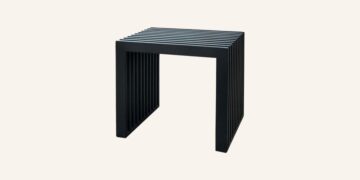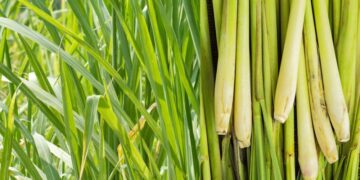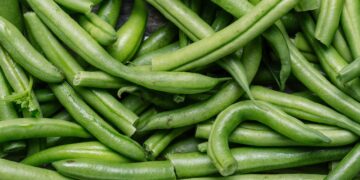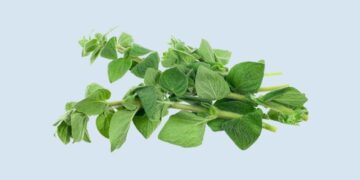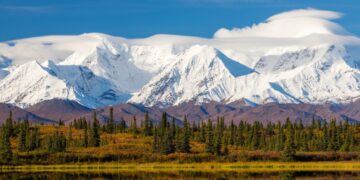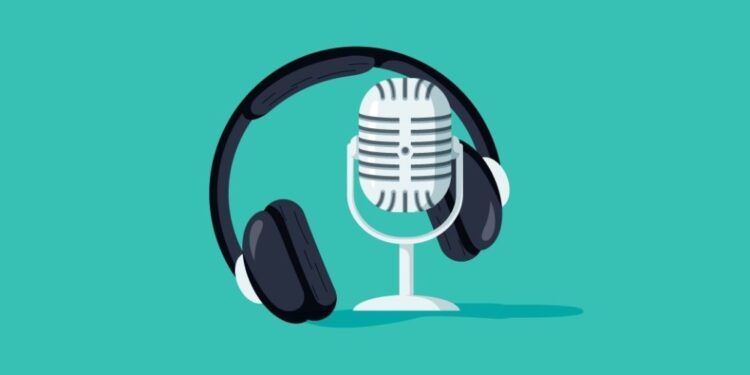A podcast is a digital audio program or recording, similar to a radio or television show, that can be downloaded from the internet or made available to and accessed from various mobile devices. As with most media in the digital age, the format, structure, and content of a podcast often resemble those of an older analog medium: the broadcast-radio program. Podcasts, like radio, are often created serially and post new episodes regularly.
There are important distinctions, though. For starters, the notion of time is different for podcasts: Each listener is in control of when (and on which device) to listen to a podcast, as opposed to radio and television, which run shows at specific times. Also, you can make your podcast episode any length you want – five minutes or five hours. As a podcaster, you’re in control.
Types of podcasts
There are a number of formats you can choose for your podcast. Consider which type is best for presenting your content.
- Interview: This is the most common format. It most often features one host who introduces and interviews guests. An offshoot of this type is a panel-discussion or roundtable format, with a host who leads the conversation.
- Monologue: The commentary-style podcast is built around one personality, which gives the show one voice or a single point of view. Lore, which focuses on the frightening history behind common folklore and is told in almost a campfire-like style, is a wonderful example of a solo-style podcast.
- Multiple hosts: In this format, the podcast is divided up between several different people, or two or more co-hosts share leading the show.
- Narrative: Unlike the first three, this storytelling style of podcast focuses on how the content is presented. In many ways, this type has fueled the popularity of podcasting. Many narrative podcasts have a decidedly linear quality and generally don’t change to another topic or segment. This can be either non-fiction or fictional.
- Mixed: This hybrid format uses various elements of the other four content types. It also may repurpose content from other mediums, such as radio or television.
How to tell it’s a podcast
Several online media formats that feature audio resemble one another but aren’t all technically podcasts.
- Podcast: A digital file that focuses on audio content and can be downloaded from a website or the cloud.
- Video podcast: Sometimes called a “vodcast”, it’s similar to a podcast but includes a visual component, which might be a slideshow of still images or actual video.
- Webcast: The distinguishing factor for webcasts is that they generally include live segments.
- Vlog: A vlog, or video blog, uses a blog-style format (the most up-to-date episode is shown first) but presents the content in a video format (on a platform such as YouTube).
Podcast equipment you will need
Improvements in hardware and software technology have dramatically changed the way podcasts are developed, created, produced, and publicized. Additionally, laptops, desktops, tablets, phones, and other devices are equipped with more powerful processors and other features that make creating podcasts easy. There are even new, inexpensive ways to make sure your environment helps you attain the best quality audio.
1. Audio hardware
Your budget will be the biggest factor in determining what equipment you buy. You’ll also need to figure out how extensive your recording rig has to be: If you aren’t tied to recording in a particular location, you can build a setup that lets you record and edit in one room or even part of a room. But if you need to record in the field, you’ll likely need additional gear. Determining what’s essential and what’s optional will be different for each podcaster. The following list gives you an idea of what you need to get started.
a. Microphones
The microphone is the most important piece of equipment for podcasters, since it’s responsible for reproducing the voices, you’ll create on the show.
- Condenser vs. dynamic mic: Podcasters have a choice of two main types of microphones, dynamic or condenser. Historically, dynamic microphones were more rugged and didn’t pick up as much ambient noise as condenser mics; the latter are generally more sensitive and produce a higher output. Condenser mics can be great for studios but may pick up too much ambient sound for field use. Dynamic mics may hide some pops or noise from the wind, but may not be as detailed in producing audio.
- USB vs. XLR mic: If you’re looking to use only one microphone via a computer and you’re on a tight budget, a USB mic is a great choice: A preamp and A/D converter are built into the mic itself. In fact, you just have to plug it into your computer and fire up your DAW (digital audio workstation). XLR mics, which carry an analog signal, offer a wider choice of models, but they need an audio interface to connect with a computer.
b. Headphones
There’s a vast array of headphones on the market, and they can range widely in price. Here are a few things to consider before you invest in a pair for podcasting.
- Quality and comfort: It’s important that you get the best-sounding headphones you can afford, since you’ll be using them to monitor your audio in real time and listen to the playback of your show. But you’ll want to make sure they’re comfortable, too. Research reviews online to find both quality and comfort.
- Type and design: For podcasting, an over-the-ear closed design is most suitable, since it prevents audio from leaking out from the earcup and being picked up by your microphone.
- Wireless and noise-canceling: Many new models on the market are wireless and include noise-canceling features. In some cases, such as working in the field, a pair of wireless headphones is useful, particularly if you’re using a mobile device. But for podcasting, active noise canceling may cause problems – particularly when you’re conducting an interview in the studio, since it can produce slightly distorted live audio and be distracting when you’re trying to carry on a conversation. If your headphones include this feature, turn it off.
- Price: Do research to find the best price for the quality and features you need.
- Models: There are many over-ear models to consider for your podcasting needs. Find headphones that deliver stunning audio performance, with a superb sense of space and detail.
2. PCs, audio interfaces, and mixing boards
Price varies a lot on the following gear. Research to get the right system or device for you.
a. Laptop or desktop computer
All laptops and desktops (Macs and PCs) give you the ability to record, edit, and produce your podcast. The DAW software you plan to use may influence whether you go with a Mac or a PC.
b. Audio interface and mixing boards
If you’re not using a USB microphone, you’ll need to set up an audio interface on your computer to convert the analog audio signal from your XLR microphone into a digital signal. You’ll most likely need a mixing board, too, particularly when you have more than one person participating in the podcast.
c. Accessories
A pop filter can make an important difference in your audio quality. It’s a screen that fits in front of your mic and prevents air from making popping sounds on your audio. You’ll also want to invest in well-designed mic stands for your studio. When you’re in the field, be sure to bring along good-quality backpacks and cases to protect your audio equipment from the elements.
There are also some great mobile accessories that let you maximize and even improve the audio quality of your phone or tablet, such as tiny mics and audio interfaces designed specifically for mobile devices. Last, when you’re recording in the field or on location, a portable audio recorder is very useful.
d. Soundproofing
Another important aspect to recording audio is to have a proper audio studio to create your podcast, which should be soundproofed.
3. Software, apps, and podcast hosting services
Research on the software, apps and podcast hosting services that suit your needs.
a. Software for audio editing
To record your podcast properly on your computer, you’ll need DAW software. For podcast newbies, it’s a good idea to download one of the most popular (free) audio apps, on which you can record audio, edit it, adjust tonal qualities, add effects to make it fuller, and perform many other podcasting tasks. And also, be able to import audio clips, including audio you’ve captured on an external audio recorder, your tablet, or your phone.
b. Mobile apps
Another option is to use an app to create your podcast. There are quite a number of mobile apps you can explore.
c. Podcast hosting
Once you’ve produced the audio file for your podcast, you’ll need to transfer it to a hosting service, so you can get your podcast listed in various directories. This will also generate an RSS feed – important for getting your podcast noticed. Quite a few podcast-hosting services are available; many offer free trials or free tier options.
Tips for creating a successful podcast
Although it’s a great time to start podcasting, you should realize that the landscape is competitive, no matter how niche your market. Podcasts take a lot of time and effort, so don’t be discouraged if you’ve created your dream podcast, but no one’s listening yet. There are many things to learn – and most of those lessons come through trial and error. Here are some tips to help you stay inspired.
a. Picture your target audience
When writing or producing content, it’s helpful to think about the type of audience you’re trying to reach with your podcast. Many marketers set up buyer personas, which are fictionalized models of ideal customers. You can develop such models to help you craft your content.
b. Create value in your niche
Chances are, someone in your industry has figured out how to create a podcast. You don’t need to be the first, and you don’t need to narrow your topic for the sake of total originality, but you should add value in a way that no one else is.
c. Make sure you love the topic
Before you dive into the nitty-gritty details of how to create a podcast, ask yourself whether you can live with your topic. Many experts believe passion is critical to creating podcasts. Don’t launch a podcast on a subject you’re not in love with. While it might be tempting to create a podcast that’s all things to all listeners, successful shows tend to have a narrow, focused topic. Successfully growing an audience is a big commitment, and it will be much more challenging if you hate your niche.
d. Plan your workflow
Should you write a detailed script or simply ad lib? It could work best to have a little of both, but that depends on the podcast. Either way, you’ll need some sort of workflow to develop your ideas and bring them to fruition. At the very least, be sure to sketch out the major themes of each show and know your subject thoroughly.
When you have multiple voices that you’re interacting with on each episode, be sure everyone is comfortable with the process and with how casual or detailed the script needs to be. Remember, if you want to be taken seriously, post episodes of your podcast regularly and consistently.
e. Develop your voice
Authenticity matters in how to create a podcast. While it’s easy for a content marketer to adapt a given tone for written content, it’s likely going to be pretty obvious if you’re affecting an unnatural persona on a recording. Be yourself with diction, voice, and attitude.
f. Be entertaining
Even if you’ve carefully prepared notes for your first podcast recording session, the final outcome shouldn’t sound like you’re reading a script. Approach your podcast with enthusiasm, personality, and a mission to entertain as well as engage.
g. Introduce new experts
While an interview with a renowned digital influencer can lend instant credibility and allure to your podcast, avoid bringing on “the usual suspects”. Once you’ve taken the basic steps towards identifying how to create a podcast, feature up-and-coming experts in your niche. Try to land guests who will bring passion, a fresh voice, and new ideas to your recording. People want to hear digital influencers talk, but they want quality, original content even more.
h. Edit carefully
Regardless of how brilliant your material is, a poorly edited audio file can quickly destroy your credibility. Editing your podcasts is just as critical as formatting blog posts; you’ll lose the majority of your audience without it. If you’re investing heavily in learning how to create a podcast as a component of your content marketing strategy, it will pay to become an expert on sound editing.
i. Optimize for SEO
It’s wise to optimize for SEO if you want your podcast to scale to new heights. Include high-potential keywords in your podcast titles and page names to ensure your website catches the eye of search engines. Creating detailed notes about the content of each show can provide additional information for search engines on your expertise.
j. Leverage the “exposure cycle”
The work isn’t over once you’ve mastered how to create a podcast. Once you have your podcast posted on your hosting service, you may think that your job is done, but it’s imperative that you promote your podcast. The principles of successfully marketing your podcast require a three-part “exposure cycle”:
- Get discovered: SEO optimize for search engines and create professional artwork to lend instant credibility.
- Be sticky: Create the kind of auditory content that people want to listen to by using social proof, plenty of personality, relevant topics, and varied tone.
- Encourage social sharing: Turn first-time listeners into promoters by including social sharing buttons, call-to-actions, and exploring syndication opportunities.
Conclusion
If you’re hoping to gain an edge above your competition, or position yourself as a thought leader, a podcast could be just the ticket for your content marketing strategy. While podcasting is a rapidly growing, simply sitting down to record your thoughts isn’t enough to give your content marketing strategy the boost it deserves. Invest in originality, quality, and ensure you’ve developed a solid plan to gain exposure for your work on how to create a podcast.












































































































